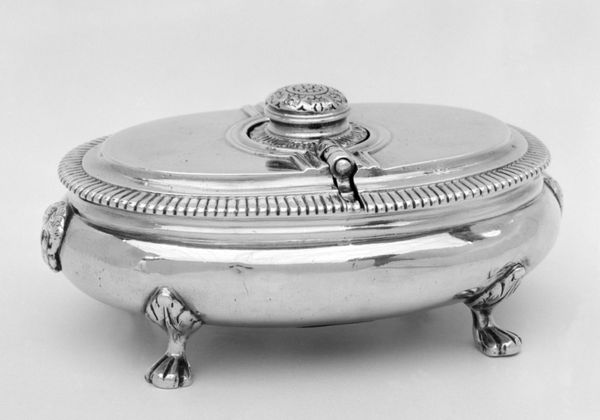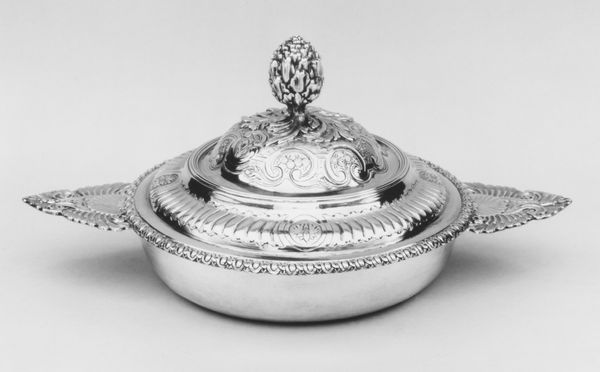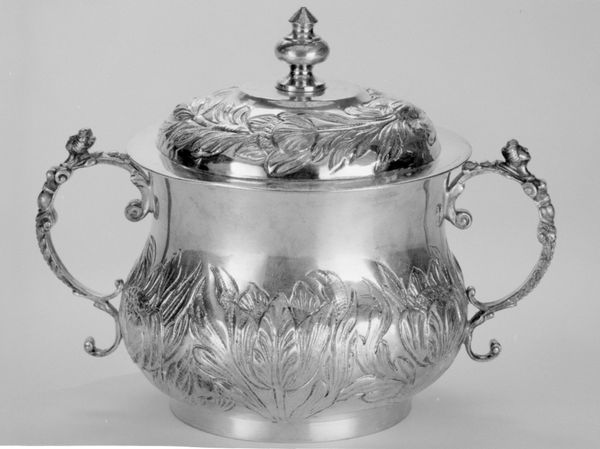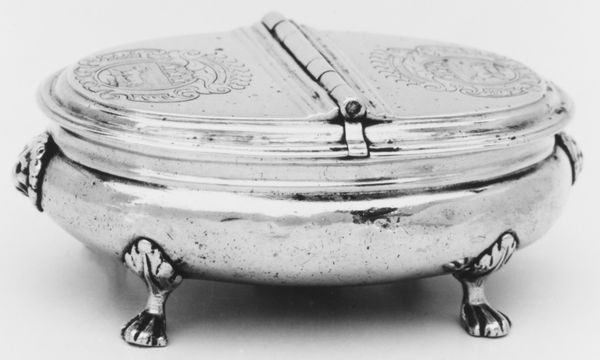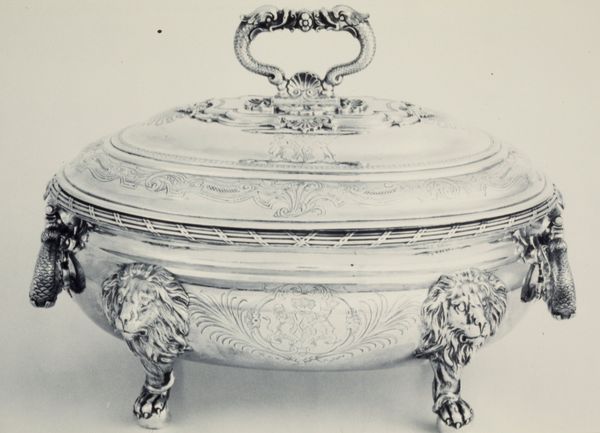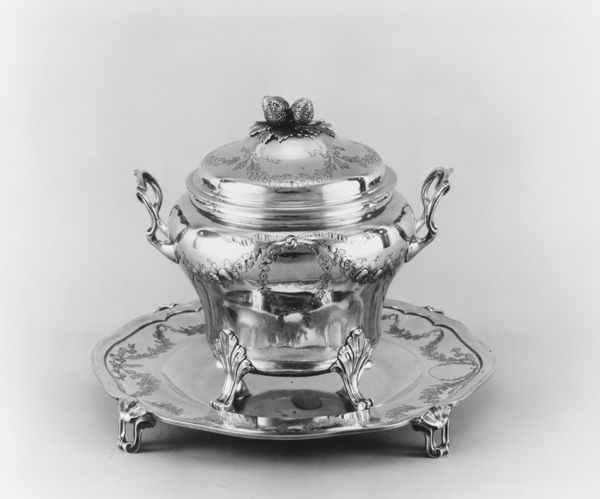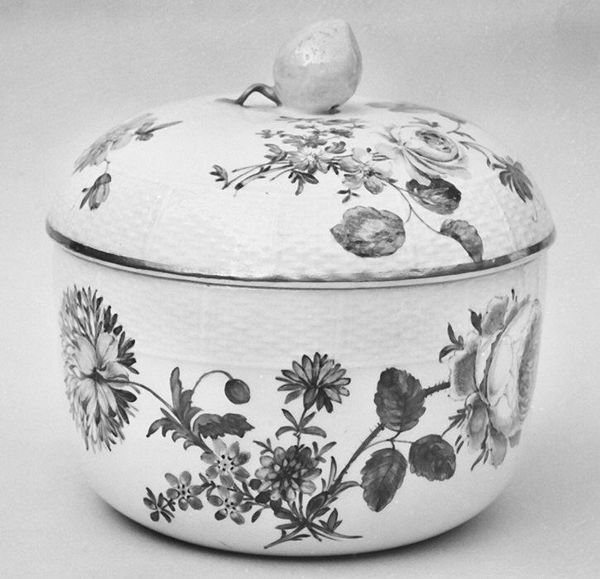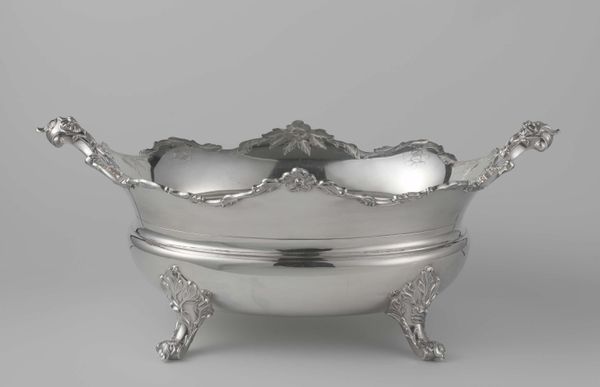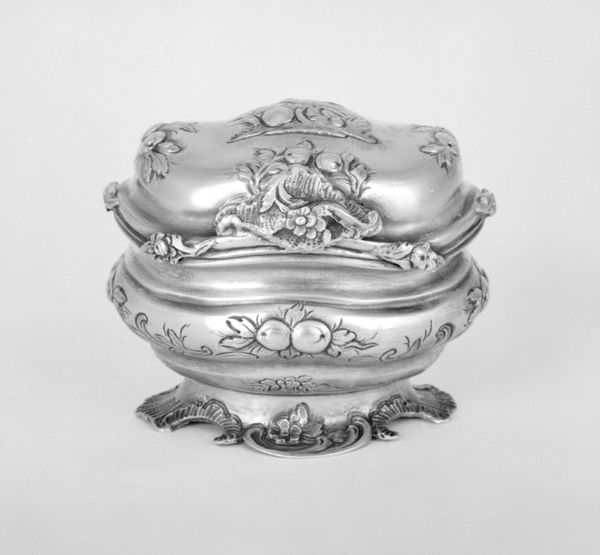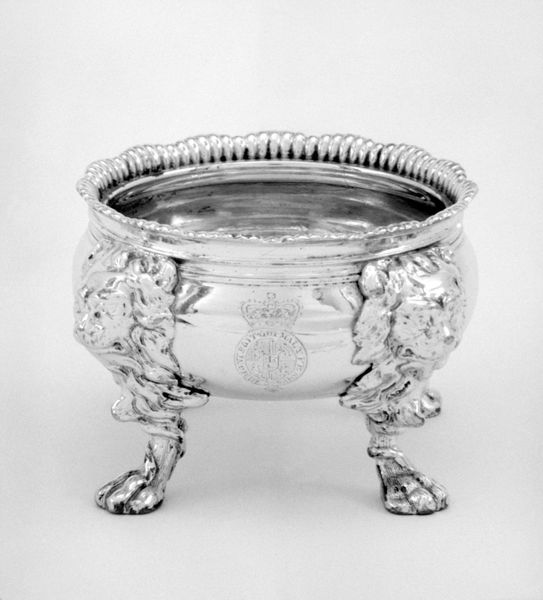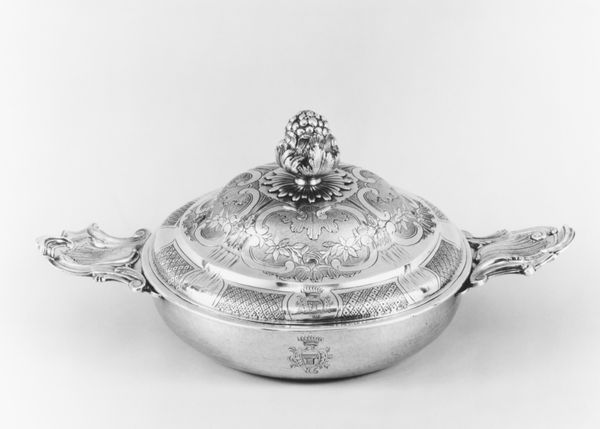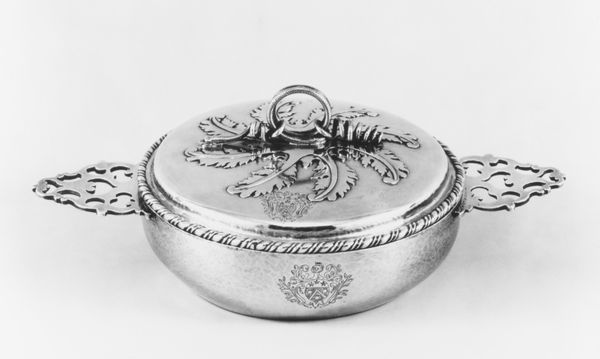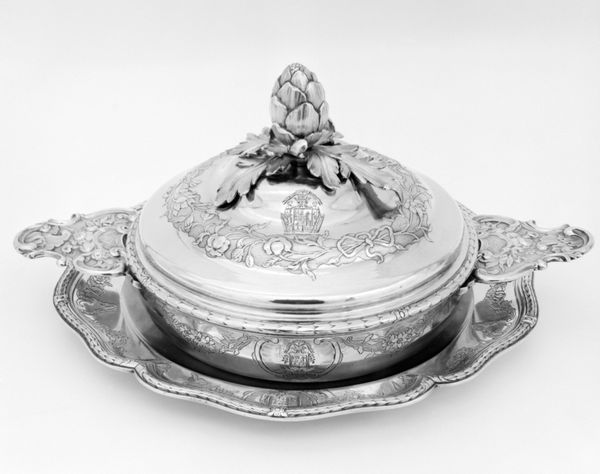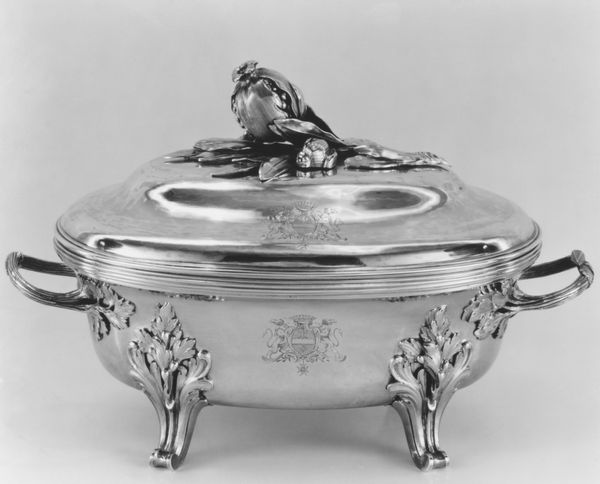
Sugar bowl with cover 1785 - 1787
0:00
0:00
silver, sculpture
#
silver
#
sculpture
#
decorative-art
Dimensions: Overall: 4 5/8 × 6 5/8 × 4 in. (11.7 × 16.8 × 10.2 cm)
Copyright: Public Domain
Editor: Here we have a beautiful silver sugar bowl with cover, made between 1785 and 1787 by Louis-Joseph Bouty. It feels so delicate, almost ethereal, even though it’s a functional object. All that subtle floral ornamentation—it makes me wonder, what kind of stories does such fine craftsmanship tell? Curator: Indeed! Notice how the pinecone finial on the lid draws our eye upward. Pinecones are age-old symbols of fertility, regeneration, and immortality. They speak to cycles of life. Why choose pinecones for a sugar bowl, though? Editor: Maybe because sugar was a luxury item back then, something precious? Like a little promise of sweetness and abundance? Curator: Precisely! This connects to the era's fascination with nature, especially in aristocratic circles. Think about how the decorative motifs are derived from nature itself—flowers, leaves, even those stylized feet that recall botanical forms. What's more, the vessel is meant to contain something precious and inviting – sugar - which further highlights its relationship with nature and the earth. The floral wreaths themselves would have communicated ideals, based on the type of flower used. Editor: That's fascinating, seeing those connections. The floral imagery does soften the overall design; without it, it would appear very heavy due to the highly reflective surface of the silver. Curator: Consider too, that in this era, sugar, while a luxury, was also increasingly tied to colonialism and the exploitation of labor. Does the sugar bowl become a symbol, perhaps unintentionally, of that complex relationship? Food for thought! Editor: Wow, that gives me a whole new perspective. It is beautiful, yes, but there is something bittersweet about its beauty knowing it’s linked to the exploitation of labour and resources. Curator: The weight of history, held in silver. We've journeyed into this artifact, unlocking potent cultural symbols, challenging notions of aesthetics, and uncovering layers of complex cultural meanings. Editor: Thanks, it definitely makes you appreciate art from a much broader cultural and symbolic perspective!
Comments
No comments
Be the first to comment and join the conversation on the ultimate creative platform.
